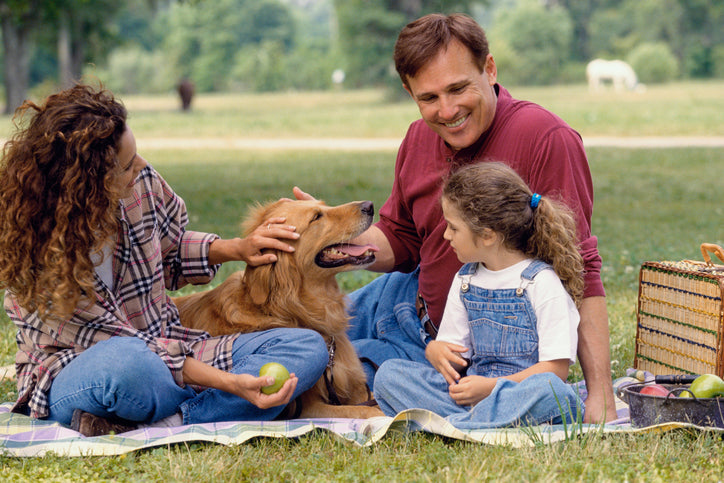As the owner and head trainer of Michael’s Pack, a dog training company devoted to canine behavior issues, located in Long Island, N.Y., I am constantly called upon to address issues between children and their interactions with dogs, be it the family dog or a dog they meet on the street.
Children and dog interaction are usually quite different from adult/dog interaction. Parents need to educate their children on canine behavior to help ensure their child experiences a positive rather than a negative and/or dangerous experience when meeting dogs.
The first thing is to understand that all dogs are different.
While there are some you can approach as a stranger and the dog will respond with licks and an overall friendly manner, there are many times that when approaching a dog that is either fearful, timid, dominant, aggressive or territorial, the reaction could be quite different. The first rule is to never approach a strange dog in a straight line, but rather a 45-degree angle, this reduces the possibility of you being perceived as a threat or a challenge to the dog.
Secondly, always keep your hands by your side, again not making any motion with your hands that could be perceived as a threat.
Children who aren’t taught differently, tend to do the exact opposite when meeting a dog. Running directly up to an unknown dog with their arms flailing is a surefire way to cause a dog to go into protection mode, which can lead to the child being bitten. Dogs have only one way of dealing with any confrontational situation, either fight or flight. If the strange dog that your child is approaching is on a leash, the second option doesn’t exist for the dog. Children should be taught the correct method of approaching a dog. First, always ask the owner if the dog is friendly. Once that is ascertained, then they can approach the dog correctly.
Canine education should begin in the home and continue in the outside world. Another concern is dogs love to jump, it’s instinctive. Unless the dog has been trained not to jump, they generally will. This can be extremely scary to a young child. When approaching a dog, make sure the dog is in a sit position before petting.
Parents should also address what to do if your child stumbles upon an unknown dog that is off leash. Dogs love to play chase. If the child starts running away as opposed to calmly walking away, the dog could easily start chasing and ultimately start jumping up on the child.
Body language in dogs is something that should be taught as well. Dogs on guard versus dogs that are well centered show different signs and they should be discussed with children.
If parents are planning on bringing a new dog in the house, another topic that should be explained is a dog’s pack mentality and their ability to determine the hierarchy in the “pack” very quickly. I get calls all the time from families that need help because their puppy is jumping and nipping the youngest child. How to overcome that puppy playfulness with children is an item we deal with in training all the time. One of the first things we do in training is to involve the child in the day to day training. This can help elevate the child’s position in the pack as per the puppy’s viewpoint. Instead of being a plaything for the puppy, now the child represents treat boy or treat girl.
The more parents work with their children and educate them on doggy behavior, the less the chances are for a horrible or negative experience occurring.
 Michael Schaier
Michael Schaier
Michael Schaier, owner/head trainer of Michael’s Pack, is a Certified Professional Dog Trainer through the Animal Behavior College (ABC-D.T.) and Certified Counsel for Professional Dog Trainers (CPDT-K.A.). He is an evaluator for the AKC’s Canine Good Citizens (CGC) test. Michael is also the author of Wag That Tail: A Trainer’s Guide to a Happy Dog and What Can You Expect When You Are Expecting A Puppy. He has appeared on News 12 Long Island, Animal Planet, and FiOS1 Long Island’s Money and Main$treet and has had featured articles in Long Island Business News, as well as Newsday.
Michael has worked with dogs his whole life as a hobby. He eventually became a trainer for Petco while volunteering for various rescue groups. His passion for dog training led him to sell his real estate business to pursue his dream of making a career out of something he loves.
Michael is devoted to working with dogs and learning how humans and canines can live harmoniously through better communication. Under Michael’s leadership, Michael’s Pack combines positive reinforcement behavior training with patience and understanding.




 Michael Schaier
Michael Schaier


